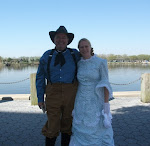e mail us @ lori.touroldwilmington@gmail.com
History Walking Tours

Open Year Round
3rd Graders on Tour!

History Walking Tour for all ages!
Railroad History
Owned primarily by the state of North Carolina, the North Carolina Railroad stretched 223 miles, beginning in Goldsboro, leading to Salisbury, and then turning south and ending in Charlotte. The railroad was the largest internal improvement effort in North Carolina during the antebellum era. It was chartered in 1849 and leased to the Richmond and Danville Railroad in 1871.
Antebellum North Carolina (1820-1850) acquired a reputation of backwardness and closed-mindedness. For this reason, the state was nicknamed the “Rip Van Winkle State”--meaning it had been asleep and needed to awake and take advantage of economic opportunities. Promoters of the North Carolina Railroad considered it a duty to do so, and to remain in Rip-Van-Winkle condition was considered “evil.” Compared to Virginia and South Carolina, North Carolina played, at best, a minor role in regional trade. Many Tar Heels, as a result, emigrated to enjoy a higher standard of living. Some railroad boosters considered abandonment of their native place as an “evil,” too.
Advocates of internal improvements believed the North Carolina Railroad was the first step in rescuing their home state from its slothful, economic condition and dependence. They also predicted increased urbanization and industrial growth.
As with most internal improvement legislation, the North Carolina Railroad charter bill of January 1849 inspired intense and prolonged debate. One reason is that boosters asked for a sizable amount of money: a $3 million charter, of which the state paid $2 million after $1 million had been raised privately. Many legislators were aghast. Promoters therefore had to convince legislators that this alternative was preferable to allowing other railroad connections to build in North Carolina, with no cost to the taxpayer. In the end, legislators deemed the construction of the North Carolina Railroad, although costly, most beneficial to the overall economic health of the state. They hoped that, after the construction of the railroad, Tar Heels could produce their own products and crops and ship them to fellow North Carolinians; an intrastate economy, it was hoped, would wean the state from economically dependence.
The North Carolina Railroad charter bill created what contemporaries called a “log-rolling session.” Most Whigs supported the charter bill, but many Democrats supported it, too. Democrats were mostly divided by region (forty-percent of eastern Democrats supported the bill and only two legislators from the Piedmont backed it). The bill narrowly passed the House and then passed the state Senate by only one vote. The bill was passed because many political deals were made. Despite allegations of graft and pork-barrel legislation, the North Carolina Railroad eventually served as a symbol of sectional compromise.
The North Carolina Railroad was chartered in 1849, and stockholders formed the company on July 11, 1850.
Boosters were surprised by the extra cost and effort needed to construct the railroad. For construction to continue in a timely manner, the state granted the North Carolina Railroad Company an additional $1 million and exempted $350,000 of company bonds from taxation. The railroad was completed after five years. In 1856 Tar Heels celebrated the opening of the railroad, for it was a human accomplishment previously deemed impossible and fostered hope in a growing economy. Some Tar Heels even thought that, by fostering economic growth, the railroad would close the financial gap between the rich and the poor.
The North Carolina Railroad was indeed a financial success. Each year, revenue increased; consequently, state revenue grew, for the Old North State was the largest company stockholder. Although it had a vested interest in the success of the rail, historians contend that the state government played a passive role in the rail company’s dealings.
The company’s financial success made some wonder whether politicians and their friends unduly benefited from the railroad’s construction. For instance, the North Carolina Railroad passed through Hillsborough, Salisbury, and Concord--all three, hometowns of politicians, who strongly supported the construction of the railroad.
Many public benefits resulted from the North Carolina Railroad, however. The foremost benefit was expanded trade. Consumers had more choices and raised their standard of living. Also, farmers imported new fertilizers to increase crop yields. In particular, wheat, cotton, and tobacco production soared, but this crop growth resulted not from the increased purchase of slaves; the percentage of slave population growth (9%) was less than in the 1840s (15%). In addition, the state experienced rapid urbanization. New towns, such as High Point and Durham, were created along the rail line, and consequently, such towns operated as hubs of the growing textile and tobacco industries. An interesting crop expansion was dried fruits. Farmers barely produced $1,000 worth of fruit in 1850, but by 1880, dried-fruit farmers rivaled wheat farmers in production (almost $233,000). Unsurprisingly the value of land near the railroad increased, too. And another benefit of the railroad was less cultural isolation and more travel opportunities for work and leisure.
Those in the mountains and the coast realized the benefits of the North Carolina Railroad. After its construction, they lobbied for connectors to be built in their regions, for they wanted expanded trade, urbanization, and economic growth. Future generations credited the railroad for rescuing the state from cultural isolation and economic depression.
But the railroad brought unexpected outcomes. Although consumer choices increased, it ensured that North Carolina remained mainly a supplier of staple crops in a larger system of free trade. New Englanders, some scholars assert, benefited more from the North Carolina Railroad than did Tar Heels, who chose to import goods instead of diversifying their agricultural economy. Instead of keeping Tar Heels at home, the railroad inspired many to leave the state: possibilities in the West and in Northern cities were calling them.
By the late 1860s, questions about the state-owned railroad ultimately led to its being leased and sold to private corporations.
Antebellum North Carolina (1820-1850) acquired a reputation of backwardness and closed-mindedness. For this reason, the state was nicknamed the “Rip Van Winkle State”--meaning it had been asleep and needed to awake and take advantage of economic opportunities. Promoters of the North Carolina Railroad considered it a duty to do so, and to remain in Rip-Van-Winkle condition was considered “evil.” Compared to Virginia and South Carolina, North Carolina played, at best, a minor role in regional trade. Many Tar Heels, as a result, emigrated to enjoy a higher standard of living. Some railroad boosters considered abandonment of their native place as an “evil,” too.
Advocates of internal improvements believed the North Carolina Railroad was the first step in rescuing their home state from its slothful, economic condition and dependence. They also predicted increased urbanization and industrial growth.
As with most internal improvement legislation, the North Carolina Railroad charter bill of January 1849 inspired intense and prolonged debate. One reason is that boosters asked for a sizable amount of money: a $3 million charter, of which the state paid $2 million after $1 million had been raised privately. Many legislators were aghast. Promoters therefore had to convince legislators that this alternative was preferable to allowing other railroad connections to build in North Carolina, with no cost to the taxpayer. In the end, legislators deemed the construction of the North Carolina Railroad, although costly, most beneficial to the overall economic health of the state. They hoped that, after the construction of the railroad, Tar Heels could produce their own products and crops and ship them to fellow North Carolinians; an intrastate economy, it was hoped, would wean the state from economically dependence.
The North Carolina Railroad charter bill created what contemporaries called a “log-rolling session.” Most Whigs supported the charter bill, but many Democrats supported it, too. Democrats were mostly divided by region (forty-percent of eastern Democrats supported the bill and only two legislators from the Piedmont backed it). The bill narrowly passed the House and then passed the state Senate by only one vote. The bill was passed because many political deals were made. Despite allegations of graft and pork-barrel legislation, the North Carolina Railroad eventually served as a symbol of sectional compromise.
The North Carolina Railroad was chartered in 1849, and stockholders formed the company on July 11, 1850.
Boosters were surprised by the extra cost and effort needed to construct the railroad. For construction to continue in a timely manner, the state granted the North Carolina Railroad Company an additional $1 million and exempted $350,000 of company bonds from taxation. The railroad was completed after five years. In 1856 Tar Heels celebrated the opening of the railroad, for it was a human accomplishment previously deemed impossible and fostered hope in a growing economy. Some Tar Heels even thought that, by fostering economic growth, the railroad would close the financial gap between the rich and the poor.
The North Carolina Railroad was indeed a financial success. Each year, revenue increased; consequently, state revenue grew, for the Old North State was the largest company stockholder. Although it had a vested interest in the success of the rail, historians contend that the state government played a passive role in the rail company’s dealings.
The company’s financial success made some wonder whether politicians and their friends unduly benefited from the railroad’s construction. For instance, the North Carolina Railroad passed through Hillsborough, Salisbury, and Concord--all three, hometowns of politicians, who strongly supported the construction of the railroad.
Many public benefits resulted from the North Carolina Railroad, however. The foremost benefit was expanded trade. Consumers had more choices and raised their standard of living. Also, farmers imported new fertilizers to increase crop yields. In particular, wheat, cotton, and tobacco production soared, but this crop growth resulted not from the increased purchase of slaves; the percentage of slave population growth (9%) was less than in the 1840s (15%). In addition, the state experienced rapid urbanization. New towns, such as High Point and Durham, were created along the rail line, and consequently, such towns operated as hubs of the growing textile and tobacco industries. An interesting crop expansion was dried fruits. Farmers barely produced $1,000 worth of fruit in 1850, but by 1880, dried-fruit farmers rivaled wheat farmers in production (almost $233,000). Unsurprisingly the value of land near the railroad increased, too. And another benefit of the railroad was less cultural isolation and more travel opportunities for work and leisure.
Those in the mountains and the coast realized the benefits of the North Carolina Railroad. After its construction, they lobbied for connectors to be built in their regions, for they wanted expanded trade, urbanization, and economic growth. Future generations credited the railroad for rescuing the state from cultural isolation and economic depression.
But the railroad brought unexpected outcomes. Although consumer choices increased, it ensured that North Carolina remained mainly a supplier of staple crops in a larger system of free trade. New Englanders, some scholars assert, benefited more from the North Carolina Railroad than did Tar Heels, who chose to import goods instead of diversifying their agricultural economy. Instead of keeping Tar Heels at home, the railroad inspired many to leave the state: possibilities in the West and in Northern cities were calling them.
By the late 1860s, questions about the state-owned railroad ultimately led to its being leased and sold to private corporations.
Sources:
Allen Trelease, The North Carolina Railroad, 1849-1871, and the Modernization of North Carolina (Chapel Hill, 1991) and Alan D. Watson, Internal Improvements in Antebellum North Carolina (Raleigh, 2002).
By Troy L. Kickler, North Carolina History Project






















